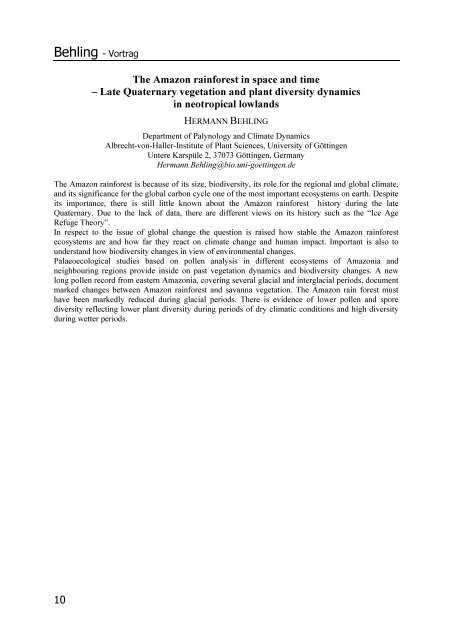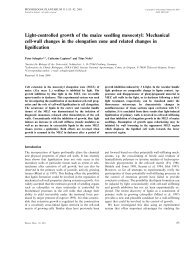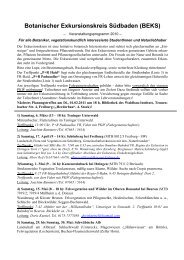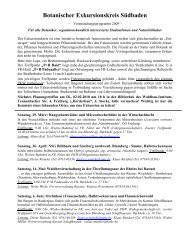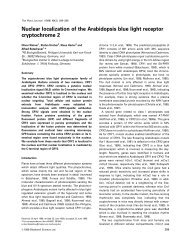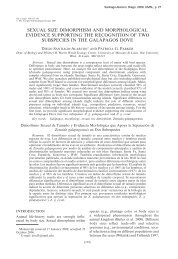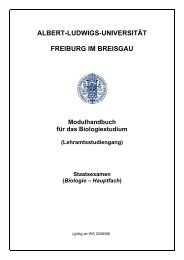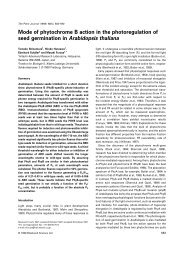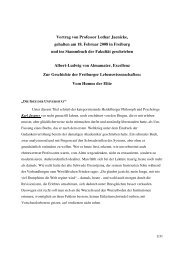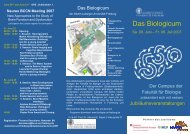download - Fakultät für Biologie - Albert-Ludwigs-Universität Freiburg
download - Fakultät für Biologie - Albert-Ludwigs-Universität Freiburg
download - Fakultät für Biologie - Albert-Ludwigs-Universität Freiburg
Sie wollen auch ein ePaper? Erhöhen Sie die Reichweite Ihrer Titel.
YUMPU macht aus Druck-PDFs automatisch weboptimierte ePaper, die Google liebt.
Behling - Vortrag<br />
10<br />
The Amazon rainforest in space and time<br />
– Late Quaternary vegetation and plant diversity dynamics<br />
in neotropical lowlands<br />
HERMANN BEHLING<br />
Department of Palynology and Climate Dynamics<br />
Albrecht-von-Haller-Institute of Plant Sciences, University of Göttingen<br />
Untere Karspüle 2, 37073 Göttingen, Germany<br />
Hermann.Behling@bio.uni-goettingen.de<br />
The Amazon rainforest is because of its size, biodiversity, its role for the regional and global climate,<br />
and its significance for the global carbon cycle one of the most important ecosystems on earth. Despite<br />
its importance, there is still little known about the Amazon rainforest history during the late<br />
Quaternary. Due to the lack of data, there are different views on its history such as the “Ice Age<br />
Refuge Theory”.<br />
In respect to the issue of global change the question is raised how stable the Amazon rainforest<br />
ecosystems are and how far they react on climate change and human impact. Important is also to<br />
understand how biodiversity changes in view of environmental changes.<br />
Palaeoecological studies based on pollen analysis in different ecosystems of Amazonia and<br />
neighbouring regions provide inside on past vegetation dynamics and biodiversity changes. A new<br />
long pollen record from eastern Amazonia, covering several glacial and interglacial periods, document<br />
marked changes between Amazon rainforest and savanna vegetation. The Amazon rain forest must<br />
have been markedly reduced during glacial periods. There is evidence of lower pollen and spore<br />
diversity reflecting lower plant diversity during periods of dry climatic conditions and high diversity<br />
during wetter periods.


